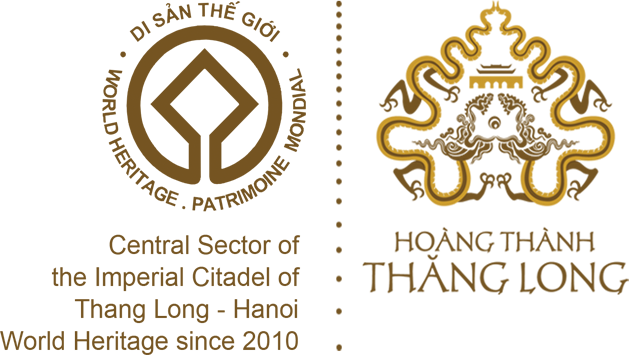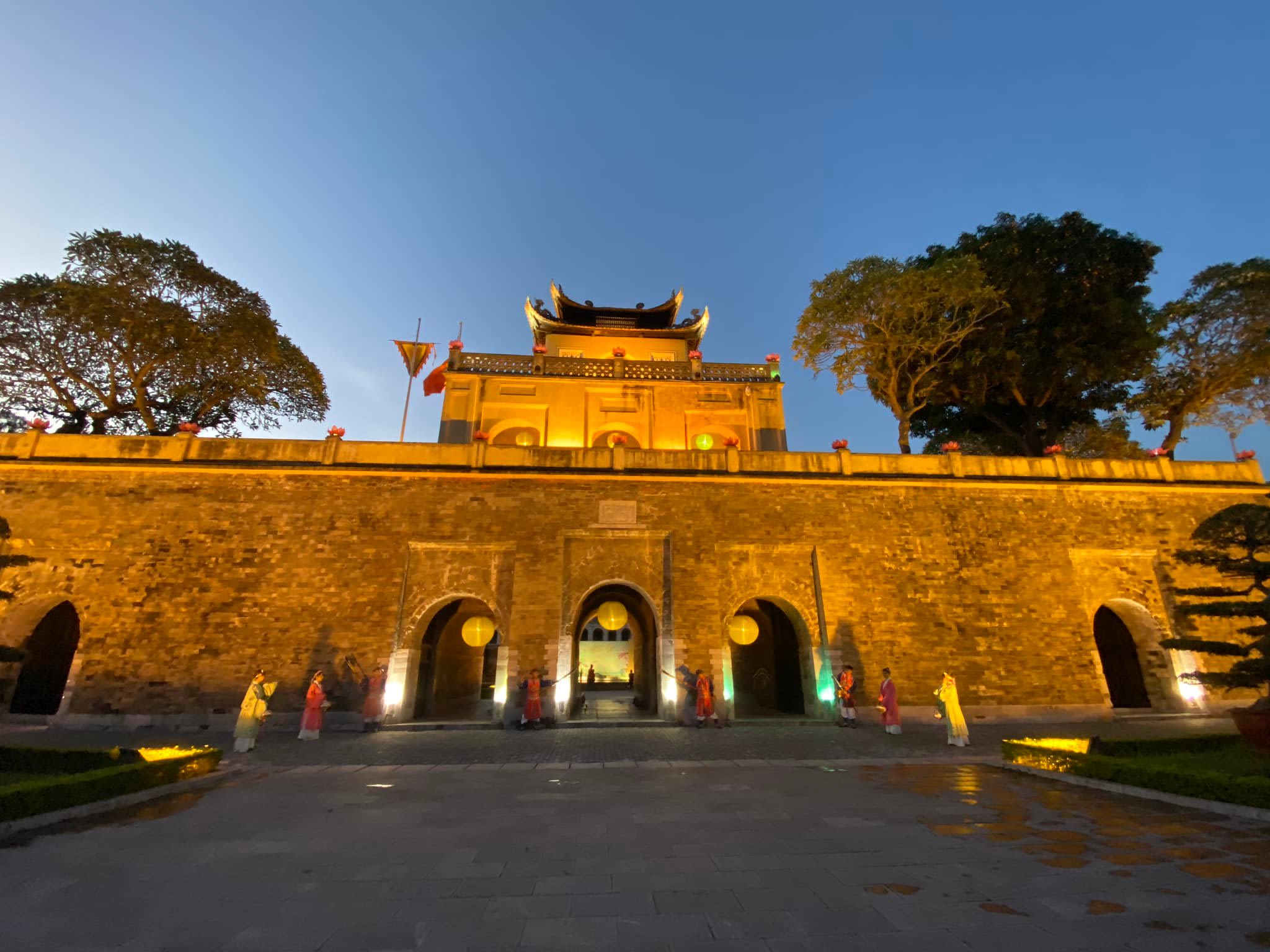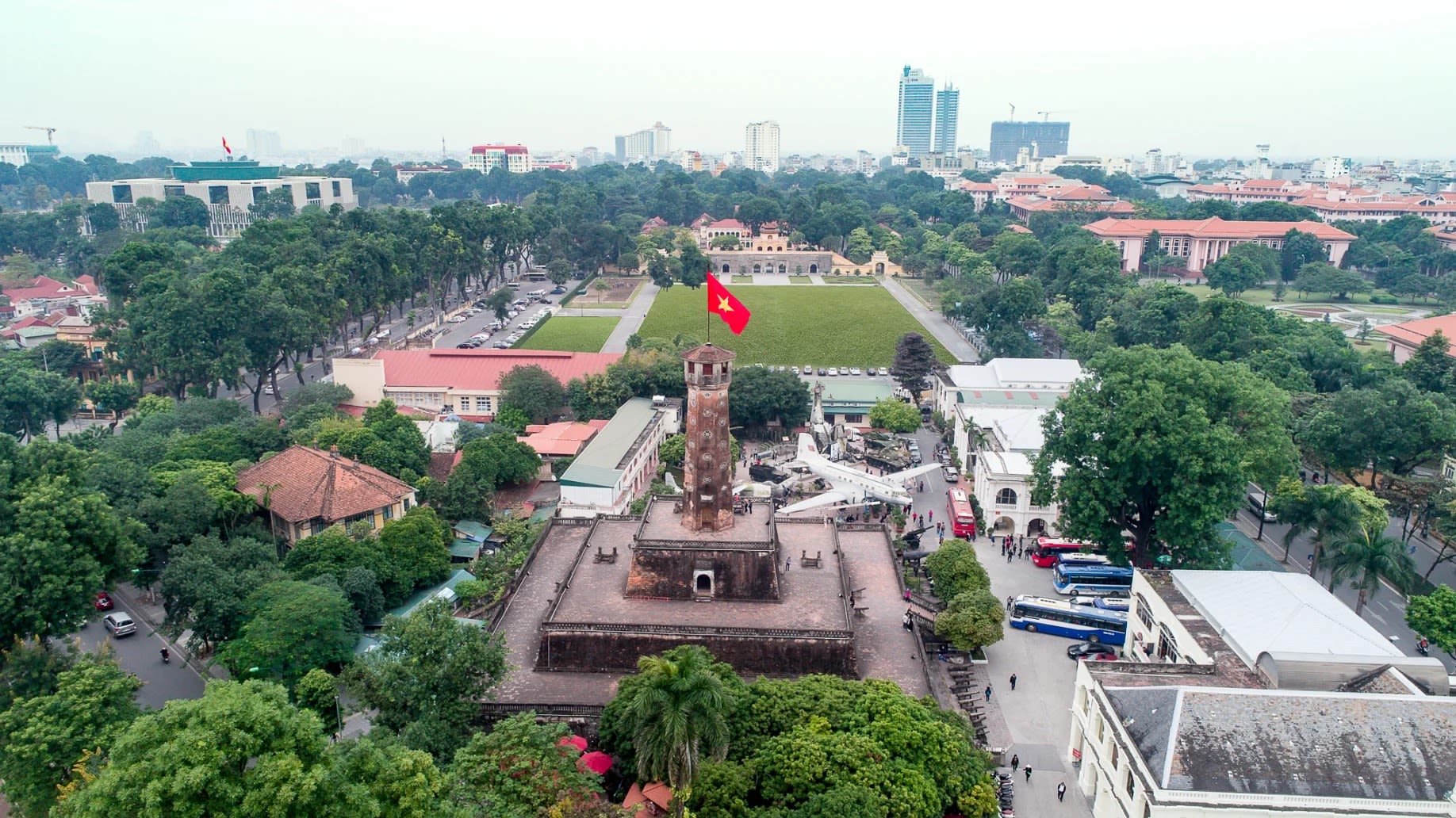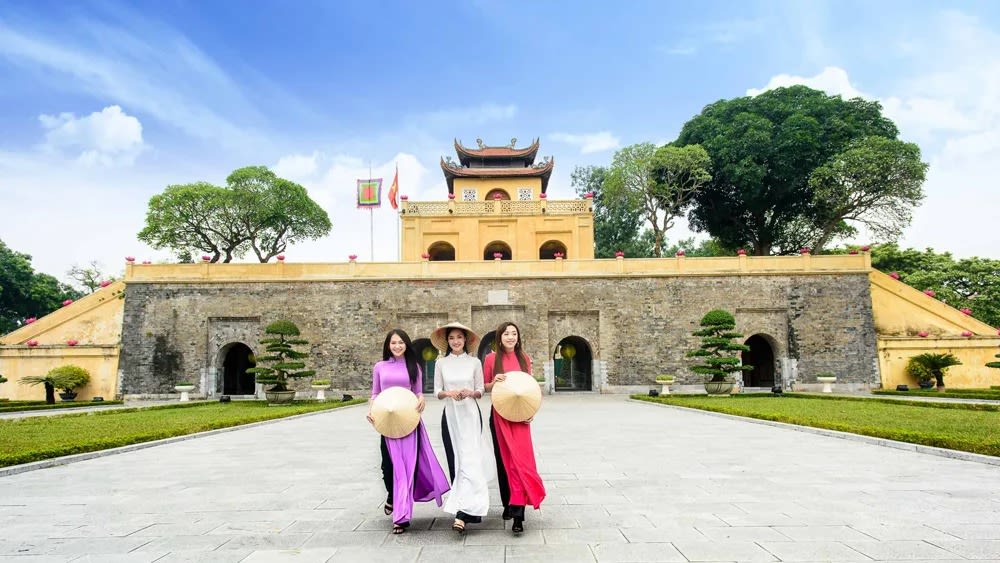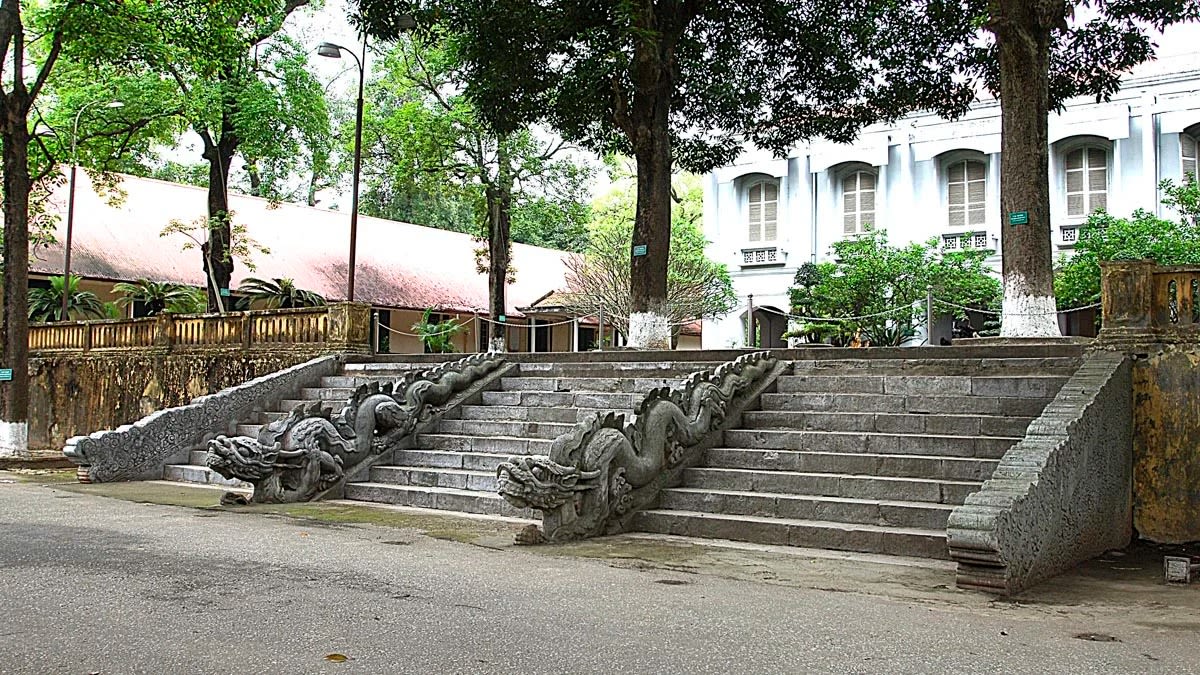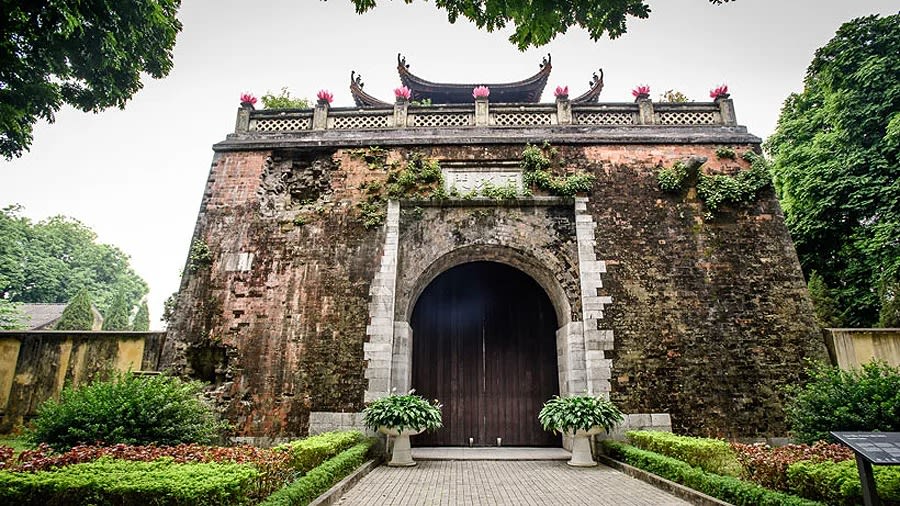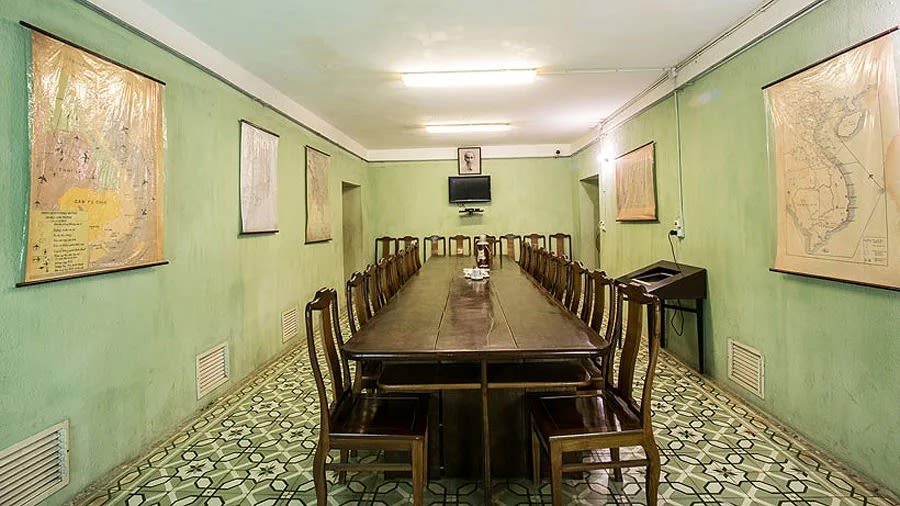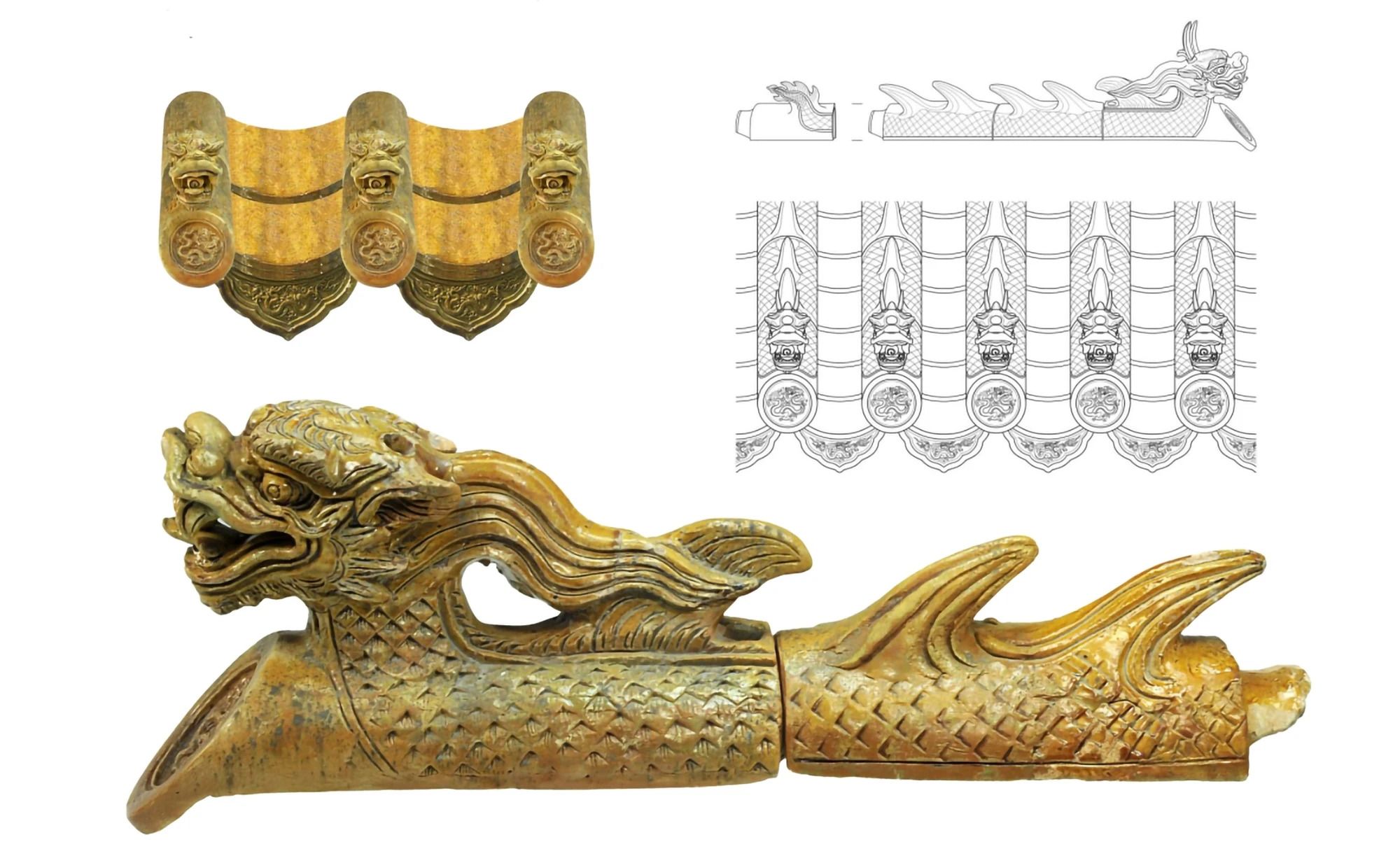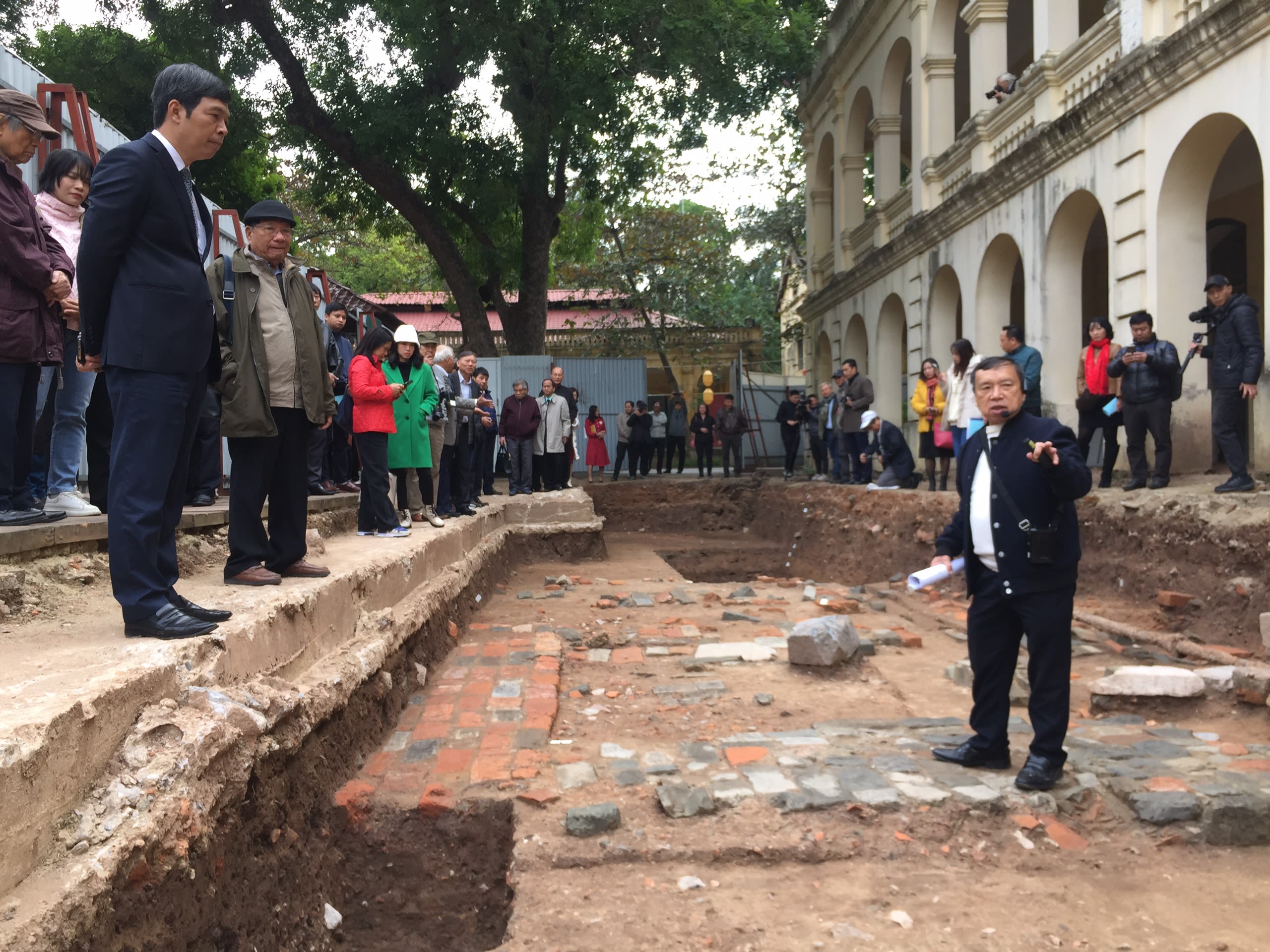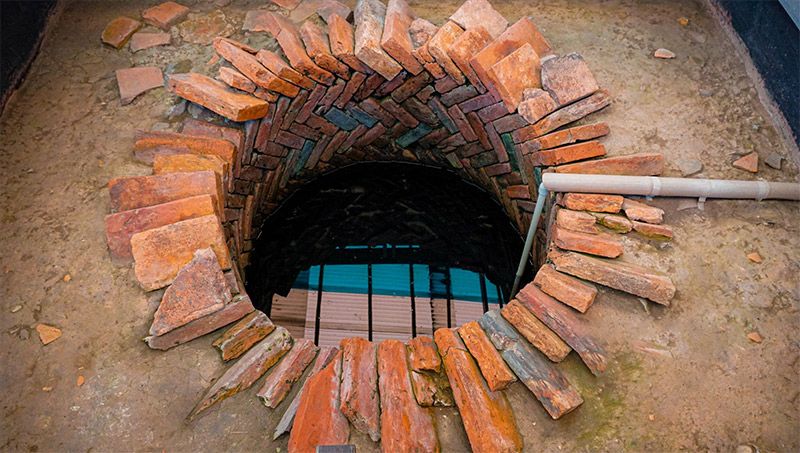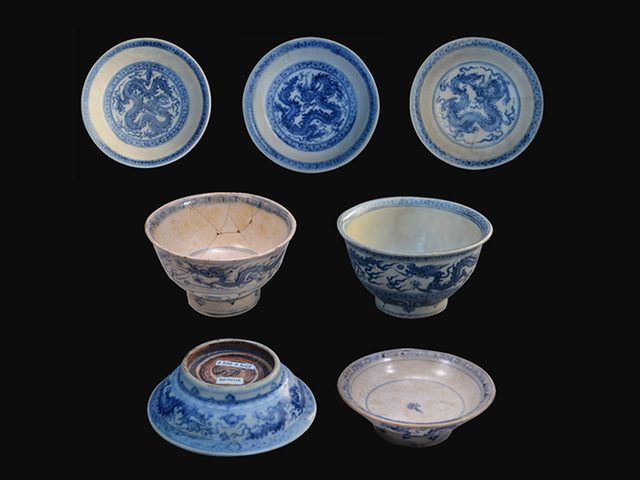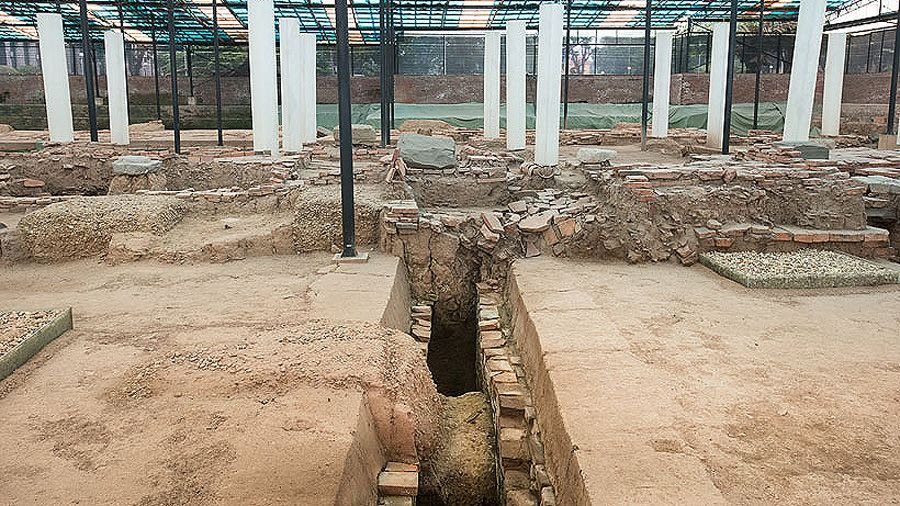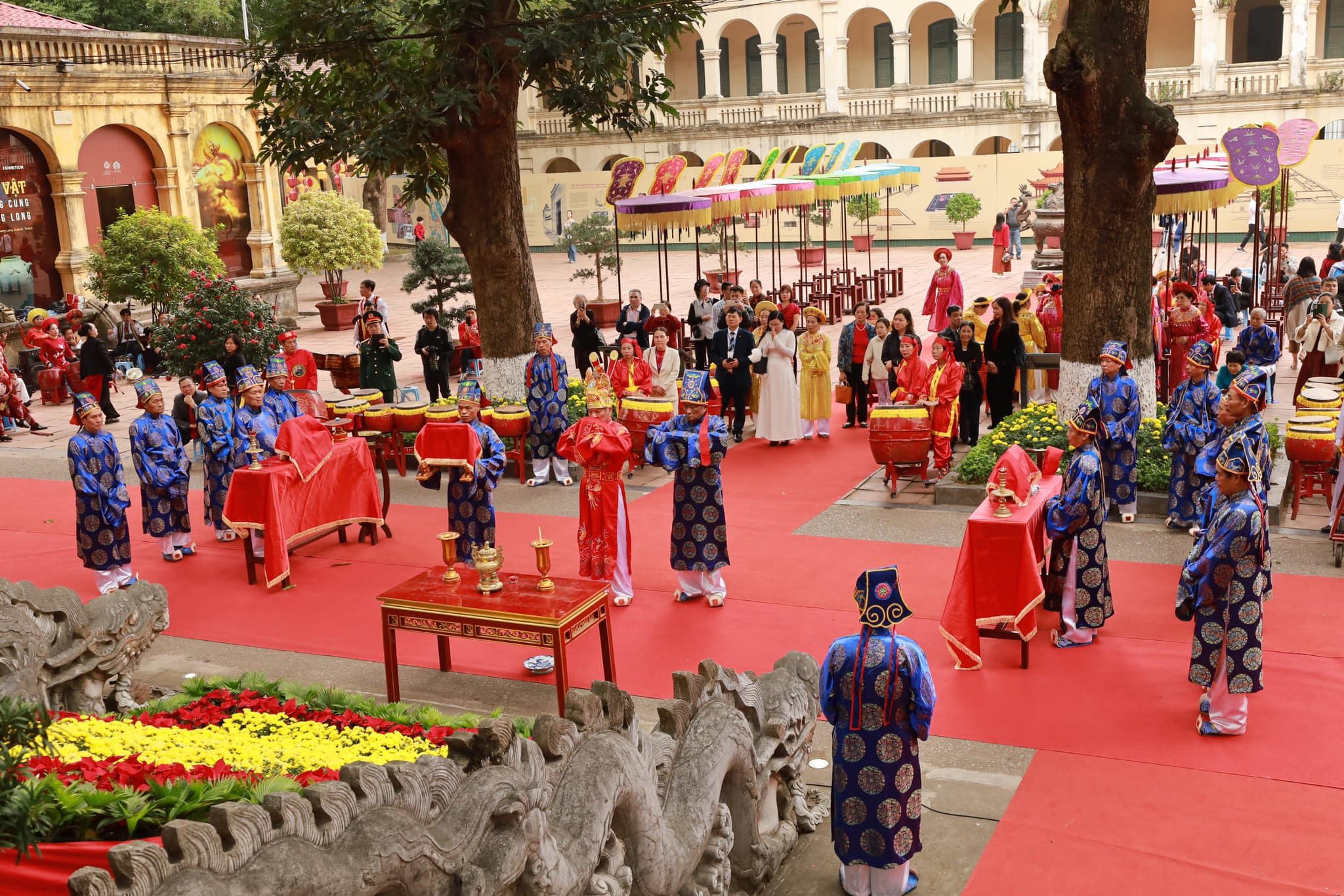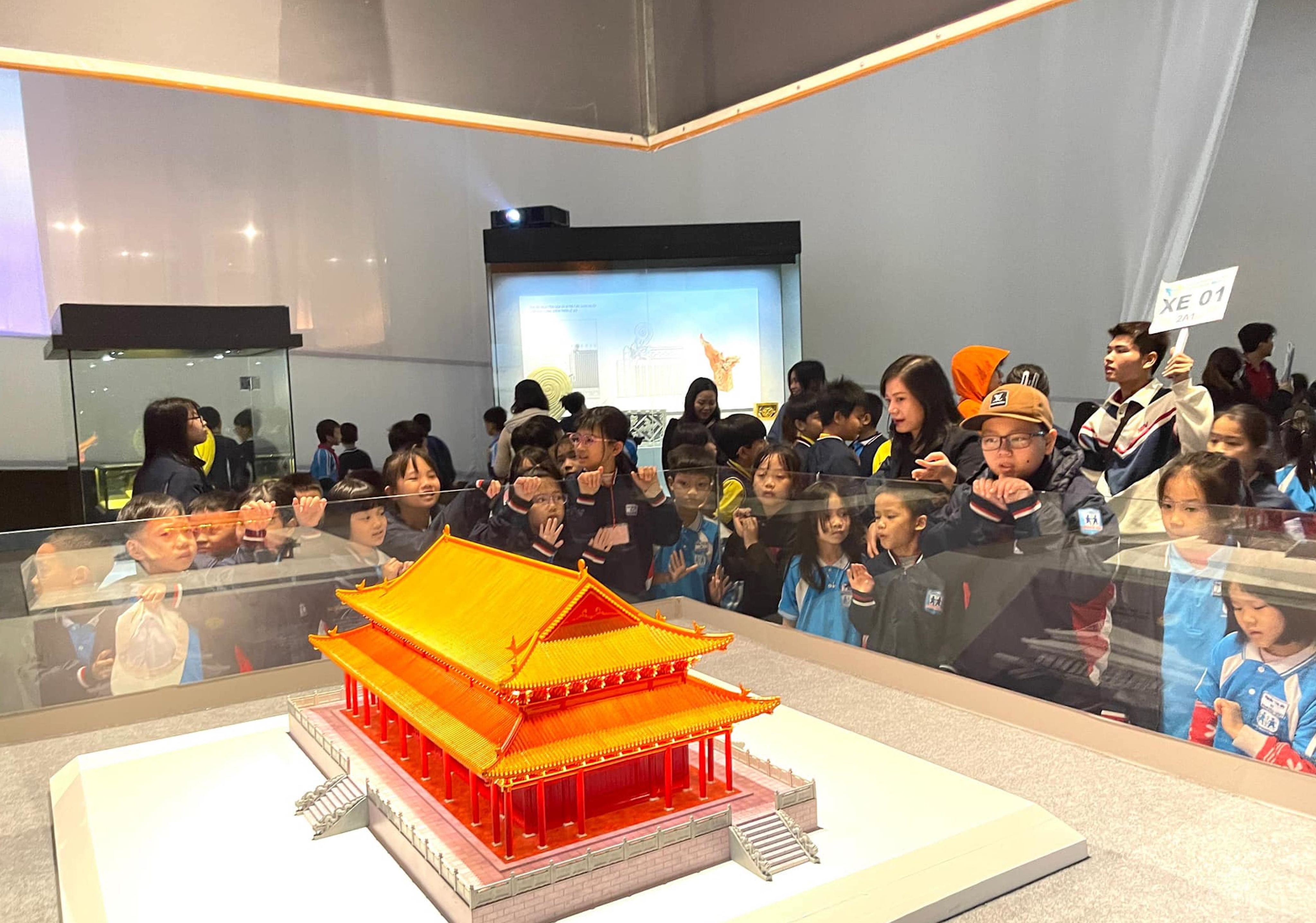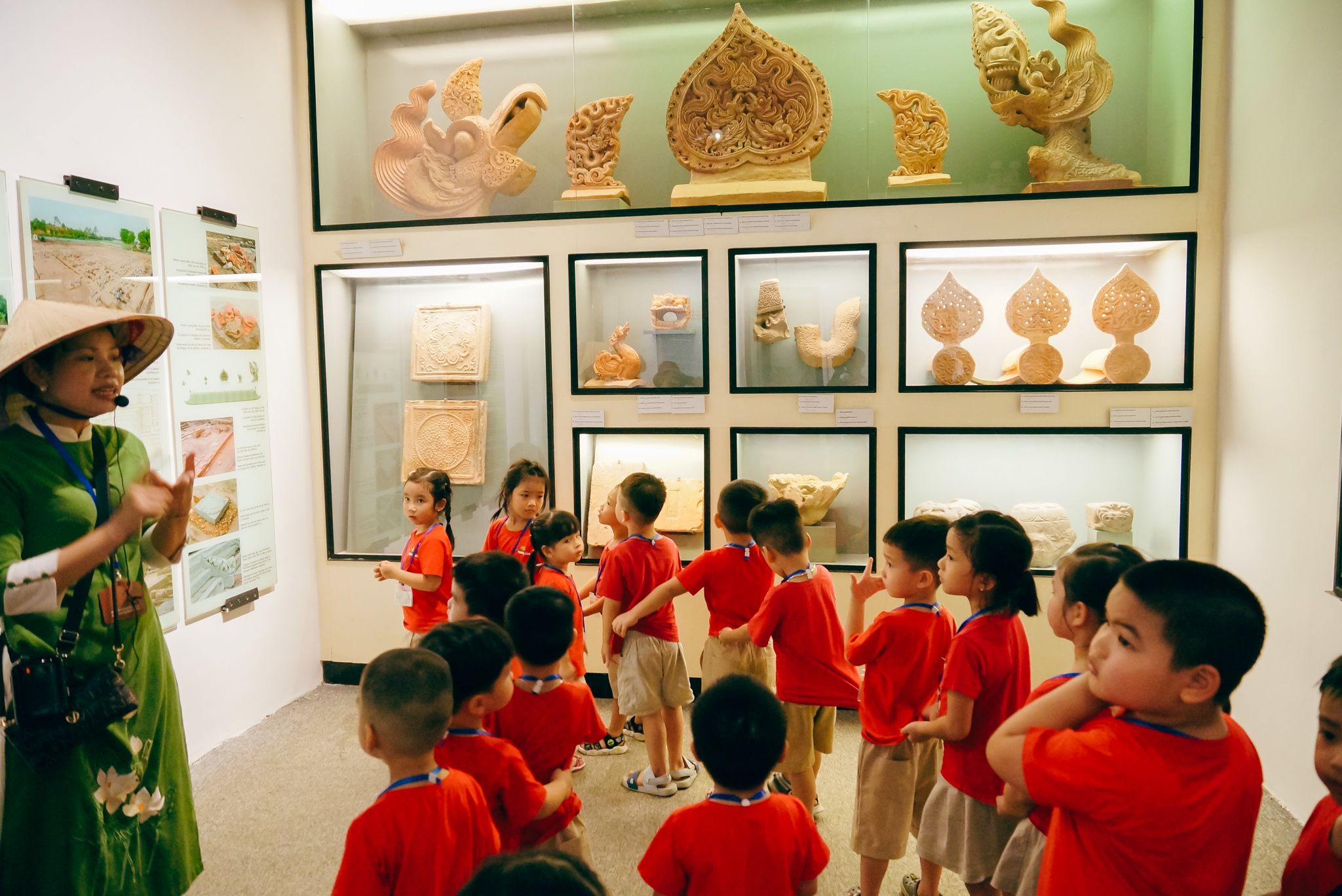THANG LONG IMPERIAL CITADEL
THE CONVERGENCE OF THE NATION’S HISTORICAL AND CULTURAL VALUES
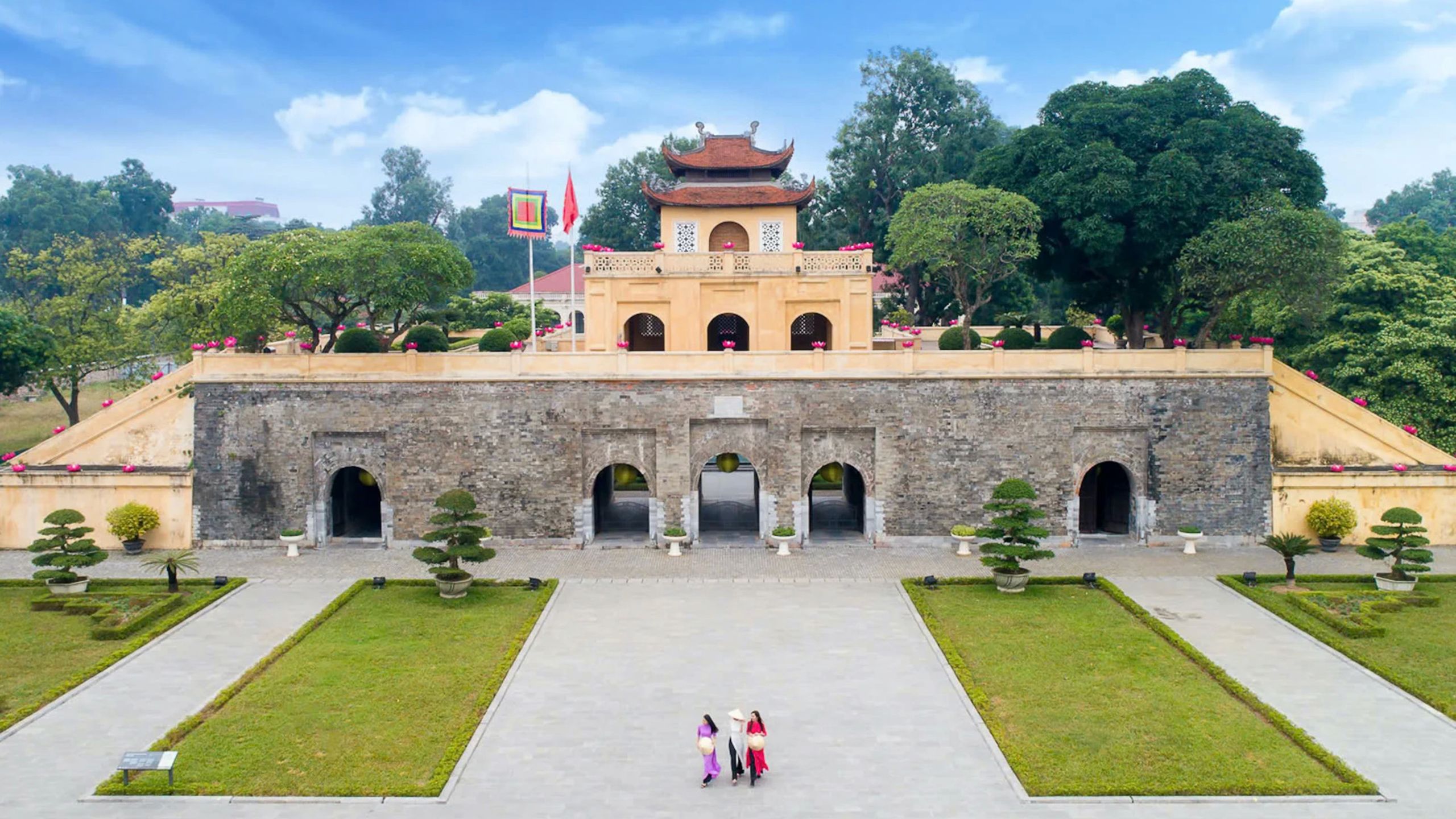
The central sector of the Thang Long Imperial Citadel, a UNESCO World Heritage Site, is the symbol of Vietnamese history and culture throughout centuries. It was where the imperial courts discussed and promulgated the nation’s important decisions. It also witnessed the ups and downs throughout resistance wars and the convergence of the nation’s architectural and artistic quintessence. The age-old architectural works, the architectural vestiges, and the archaeological artefacts at Thang Long Imperial Citadel are the great pride of Thang Long-Hanoi, as well as Vietnam in general.
FROM A HISTORIC DECISION

In 1009, Emperor Ly Thai To ascended to the throne in Hoa Lu (today’s Ninh Binh Province) and founded the Ly Dynasty. At that time, Hoa Lu was already the capital city of the Dinh Dynasty and Early Le Dynasty. With its strategic location surrounded by mountains, Hoa Lu is advantageously positioned for defence.
After assuming the throne, Emperor Ly Thai To realised that Hoa Lu’s treacherous and narrow terrain was not suitable with its role as the capital of a peaceful country. Just one year into his reign, the Ly emperor issued the Edict on the Transfer of the Capital.
In this historic document, Emperor Ly Thai To expressed his desire to place the capital in a central place to pursue great causes and make it favourable for future generations to thrive so as to ensure the eternal existence of the nation and the richness of customs. When the edict was issued, both the emperor and his officials assented to relocating the capital to the Dai La Citadel.
In the autumn of 1010, Emperor Ly Thai To and his court began the move to Dai La.
THANG LONG
According to historical documents, as soon as the emperor’s convoy arrived in Dai La, the emperor saw a golden dragon soaring to the sky, thus naming the city Thang Long (meaning Ascending Dragon). From that moment, Thang Long officially became the capital of an independent and unified country. Throughout the ups and downs of history, Thang Long continued as the capital of the Tran, Le, Mac and Restored Le Dynasties.
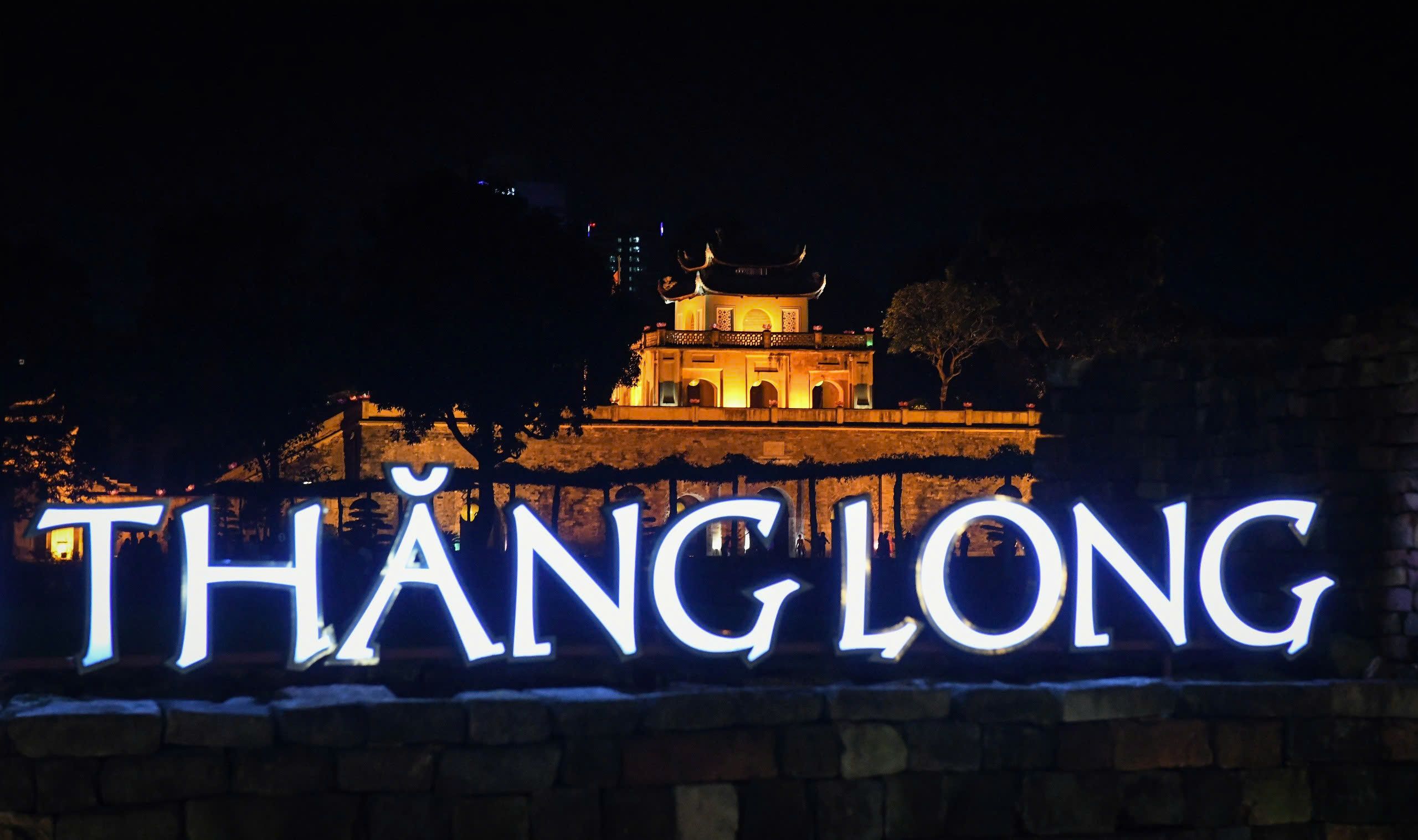
According to historical documents, as soon as the emperor’s convoy arrived in Dai La, the emperor saw a golden dragon soaring to the sky, thus naming the city Thang Long (meaning Ascending Dragon). From that moment, Thang Long officially became the capital of an independent and unified country. Throughout the ups and downs of history, Thang Long continued as the capital of the Tran, Le, Mac and Restored Le Dynasties.
Once moving the capital to Thang Long, the Ly Dynasty began to construct new buildings for the new capital. Thang Long was comprised of two parts: the imperial citadel and the surrounding citadel. The imperial citadel was the residence of the imperial family and place for court meetings. The whole imperial court – the central body of the feudal state – worked in this place, which is today known as Ba Dinh District. The site of court meetings was named Can Nguyen Hall, which was later renamed Thien An and Kinh Thien. Outside the imperial citadel was where the commoners lived. This whole area was surrounded by a large citadel called Dai La or La Thanh.
The Thang Long Imperial Citadel today
The Thang Long Imperial Citadel today
With the planning of the Thang Long capital consisting of two parts, the Ly Dynasty laid the foundation for the structure of the Thang Long capital for centuries to come. The Imperial Citadel saw changes in size and scale throughout different dynasties, and many items were destroyed by war or time. The overall space remained relatively unchanged over the centuries.
Except for a brief period at the end of the Tran Dynasty and during the Ho Dynasty, when the capital was moved to Thanh Hoa, Thang Long served as the capital almost continuously for eight centuries. It wasn’t until the early 19th century, when the Nguyen Dynasty made Hue the capital, that Thang Long ceased to be the nation’s capital. The Thang Long Imperial Citadel witnessed great changes. The great poet Nguyen Du, before heading to the Qing dynasty on an envoy mission, wrote two poems about the "old capital" of Thang Long while traveling from the imperial capital of Hue to Thang Long. In Thăng Long I, he wrote:
The thousand-year-old palace became a main road/ A new citadel lost its ancient palace.
TOUCHING THE PAST

Despite the monumental changes in history and the destruction of many structures, the ancient Thang Long Imperial Citadel still retains some grand architecture.
The citadel was built along a north-south axis, with its main gate facing south. The central axis was known as the “divine path” or “imperial path” (the king’s path).
The Hanoi Flag Tower
The Hanoi Flag Tower
Entering from the south, the first architectural item is the Ky dai, commonly known as the Hanoi Flag Tower. This marks the southern beginning of the central axis of the citadel.
The Ky dai was built during the Nguyen Dynasty, consisting of three base levels and a column. It served both as a flagpole and an observation tower. The tower is impressive in scale, standing 33.4m high, or 41.4m, including the flagstaff.
From here, following the “imperial path”, it would reach Doan Mon. Doan Mon, or the Southern Gate, is another grand structure featuring five large gates.
Doan Mon today
Doan Mon today
At the heart of the Thang Long Imperial Citadel was Kinh Thien Palace – the venue for court meetings and where the emperor welcomed high-ranking scholars and foreign envoys. This was the most important centre of power in Dại Viet for centuries. Kinh Thien Palace no longer exists, but the stone steps with a pair of dragons, crafted during the Early Le Dynasty, have been preserved intact.
A pair of stone dragons from the early Le Dynasty, the only remaining relics of the ancient Kinh Thien Palace.
A pair of stone dragons from the early Le Dynasty, the only remaining relics of the ancient Kinh Thien Palace.
The final major surviving item of the ancient citadel is the Cua Bac (Northern Gate), located on Phan Dinh Phung Street. This large gate faces north. On its walls, there are still marks of two cannon shots fired by French colonial forces during their attack on Hanoi in the late 19th century.
Northern Gate
Northern Gate
In addition to the feudal architectural features, the Thang Long Imperial Citadel also preserves many French architectural works and structures built during the resistance against the US. Among the most notable is the D67 House and Bunker. The full name of D67 is the Politburo and Central Military Commission Meeting Room.
Due to heavy American bombing, the Ministry of Defence decided to build the D67 House and Bunker to ensure the safety of the headquarters during the war.
Inside the D67 House and Bunker
Inside the D67 House and Bunker
The D67 House and Bunker relic features the Meeting Room of the Politburo and the Central Military Commission, the Office of General Vo Nguyen Giap, and the Office of General Van Tien Dung. The building is connected to a 9m deep bunker, solidly built to withstand bombs. The bunker has three floors. Here, the Politburo and the Central Military Commission made many important decisions, including meetings to decide on the historic Ho Chi Minh Campaign in the spring of 1975, completely liberating the south and unifying the country.
MYSTERIES SOLVED

The Central Area of Thang Long Imperial Citadel (including the Citadel and Archaeological Site No.18, Hoang Dieu) was recognised by UNESCO as a World Cultural Heritage in 2010.
Having gone through the ups and downs of history and being destroyed many times, in the past, knowledge about Thang Long Imperial Citadel was mainly acquired through history books and some limited data from archaeology.
In 2002, when the National Assembly House was built, precious heritages of the ancient Thang Long Imperial Citadel were simultaneously discovered over an area of tens of hectares with millions of artifacts. That area is now known as Archaeological Site No.18 Hoang Dieu Street. This is the first time in history that scientists have discovered such a range of architectural traces and archaeological relics stacked on top of each other over the course of dozens of centuries.
A dragon-shaped roof tile with a yellow glaze is typical of the palace architecture at the Thang Long Imperial Citadel.
A dragon-shaped roof tile with a yellow glaze is typical of the palace architecture at the Thang Long Imperial Citadel.
The farthest is the Dai La period (when Vietnam was still under Chinese domination, 7th-9th century). Next are the relics of the Dinh and early Le dynasties (10th century). Particularly valuable are the archaeological layers related to the Ly dynasty (1009-1225) and Tran dynasty (1226-1400), which provide valuable information about these two monarchies.
Lying above the Ly - Tran layer are cultural layers related to the early Le dynasty (1428-1527), Mac (1527-1592), Le Trung Hung (1593-1789) and Nguyen (1802-1945).
Scientists discuss the results of archaeological excavations at the Thang Long Imperial Citadel.
Scientists discuss the results of archaeological excavations at the Thang Long Imperial Citadel.
With these special values, the Central Area of Thang Long Imperial Citadel (including the Citadel and Archaeological Site No.18, Hoang Dieu) was recognised by UNESCO as a World Cultural Heritage in 2010.
After being recognised, the Vietnam Academy of Social Sciences coordinated with the Hanoi People's Committee to continue archaeological excavations in the Citadel area. After more than ten years of continuous excavation, the excavation area has now reached more than 10,000 m2. Those excavations are a journey to affirm values.
An ancient well discovered at the Thang Long Imperial Citadel.
An ancient well discovered at the Thang Long Imperial Citadel.
During the Ly Dynasty, the most prominent features were large carefully constructed and reinforced water channels, about 2m wide, which remain durable after thousands of years of history. Wooden architecture is easily damaged by time, but the foundation pits of columns through the periods help today’s generation imagine that large-scale earthen and wood structures once existed here.
Similarly, dense architectural ruins of the Tran Dynasty have gradually been unveiled, the most notable of which is the road connecting Doan Mon to the Kinh Thien Palace area following the Than Dao axis.
A collection of imperial ceramics, which was unearthed at the Thang Long Imperial Citadel, has been recognised as a national treasure.
A collection of imperial ceramics, which was unearthed at the Thang Long Imperial Citadel, has been recognised as a national treasure.
The most obvious are the architectural vestiges of the Le and Le Trung Hung (Revival Le) dynasties, which provide insight into Kinh Thien Palace — the place where the court was held — and Dan Tri courtyard — where all the mandarins gathered under the dragon steps when attending the court.
Associate Professor - Doctor Tong Trung Tin, the President of the Vietnam Archaeological Association, emphasised that the layers of soil bearing the imprint of all historical periods throughout 13 centuries have developed continuously without interruption, especially the central area of the Imperial Citadel and the Forbidden City. This area is a valuable asset of Vietnam and of the capital Hanoi in particular.
EXPECTATIONS FOR THE RESTORATION OF KINH THIEN PALACE

The place where the royal court was held is the most important space in the Thang Long Imperial Citadel. During different periods of time, the court had different names such as Can Nguyen Palace and Thien An Palace. During the early Le Dynasty and then the Mac Dynasty, and the Later Le Dynasty, the court location remained unchanged and was called Kinh Thien Palace. When the Nguyen Dynasty relocated the capital in Hue, Kinh Thien Palace was destroyed and replaced by Long Thien Palace. The French then destroyed Long Thien Palace to build the Artillery Command Headquarters right on the foundation of Kinh Thien Palace.
As the Ly and Tran Dynasties were too long ago, scientists wanted to decipher the mystery of the architecture of Kinh Thien Palace during the Le Dynasty. The great difficulty is that the building was destroyed two centuries ago.
Archaeological site at No.18 Hoang Dieu Street.
Archaeological site at No.18 Hoang Dieu Street.
Excavations have helped to gradually reveal the appearance of Kinh Thien Palace. In Oriental architecture, and Vietnam in particular, the pillars play the main role of the construction. The construction workers made the pillar foundations and placed stone blocks at the foot of the pillars. The 2023 archaeological excavation created a turning point as it unveiled ten single foundations and seven double foundations, which translates to a total of 24 single foundation units on the foundation of Kinh Thien Palace.
Based on the findings, scientists initially determined that Kinh Thien Palace had a scale of nine compartments, with the middle compartment measuring 6.8m wide, the side compartments 5.35m wide, and the two end compartments 3.4m wide each. The total area of Kinh Thien Palace during the Le Trung Hung period is estimated to be about 1,485 sq.m.
Based on the findings, scientists initially determined that Kinh Thien Palace had a scale of nine compartments, with the middle compartment measuring 6.8m wide, the side compartments 5.35m wide, and the two end compartments 3.4m wide each. The total area of Kinh Thien Palace during the Le Trung Hung period is estimated to be about 1,485 sq.m.
The revival of royal ceremonies at the Thang Long Imperial Citadel.
The revival of royal ceremonies at the Thang Long Imperial Citadel.
Along with the foundation, the scale, roof and the roof-supporting frame of Kinh Thien Palace are very remarkable. While religious and belief structures often use fish-scale tiles and unpolished terracotta-coloured tiles, the tiles in Kinh Thien Palace are yellow-glazed tube tiles (the yellow colour was associated with the emperor). Each tile on the eaves is in the shape of a dragon's head, the next tiles are the dragon's body, and the roof tile is the dragon's tail. The entire set of tiles is a flock of lively dragons.
Regarding roof support, the most important milestone was in 2017-2018, when scientists found 70 wooden roof structures. Many of them are in the structure of the "dougong" system. In 2021, in the east of Kinh Thien Palace, an architectural model was also found that truly reflects the wooden frame supporting the roof, which is the "dougong" system — a structural element of interlocking wooden brackets, located under the porch and roof, which expands the porch area, has the ability to withstand force, and plays a decorative role to create beauty for the building.
A reconstruction of a model of the Kinh Thien Palace architecture.
A reconstruction of a model of the Kinh Thien Palace architecture.
Dr. Bui Minh Tri, Institute of Imperial Citadel Studies, Vietnam Academy of Social Sciences, who directly researched the frame and roof of Kinh Thien Palace, said: “Although the complete "dougong" system has not been found, combining archaeological documents, based on the architectural form of the palace painted on pottery and architectural model documents of the Le so Dynasty, the Institute of Imperial Citadel Studies has enough basis to firmly determine that the architecture of Kinh Thien Palace belongs to the form of "dougong". This is an important discovery, the key to research to decode the mystery of the architectural form of Kinh Thien Palace.”
Visiting Thang Long Imperial Citadel today, visitors find it difficult to imagine and feel the architectural beauty and understand the message of the ancients, because most of the works are only ruins. Therefore, Professor Nguyen Quang Ngoc as well as many other scientists emphasised that, with the special significance of Kinh Thien Palace, the restoration is the responsibility of the government and scientists to the people, and to history. This is a task that needs to be focused on in the coming time.
With the special significance of Kinh Thien Palace, the restoration is the responsibility of the government and scientists to the people, and to history. This is a task that needs to be focused on in the coming time.
SPREADING THE QUINTESSENCE

Thang Long Imperial Citadel is the most important heritage of the Capital, and at the same time is one of the attractive tourist destinations. Every year, Thang Long Imperial Citadel welcomes hundreds of thousands of domestic and international tourists.
One of the site's most attractive tours is the night tour "Decoding Thang Long Imperial Citadel".
The night tour "Decoding Thang Long Imperial Citadel" lasts about 90 minutes and starts from Doan Mon — the main gate to the Forbidden City, residence and workplace of the ancient king.
Joining the tour, visitors can experience the ancient Imperial Citadel space, admire valuable artifacts and antiques found at Thang Long Imperial Citadel in the exhibition house with the theme "Thang Long - Hanoi - A thousand years of history from underground", and offer incense to commemorate the ancestors at the Kinh Thien Palace threshold area.
The final destination of the tour is the Archaeological Site at No.18 Hoang Dieu Street. After years of excavation, archaeologists have discovered millions of artifacts, layered over one another, spanning 1,300 years. The tour concludes with a game called "Decoding the Thang Long Imperial Citadel", open to all visitors.
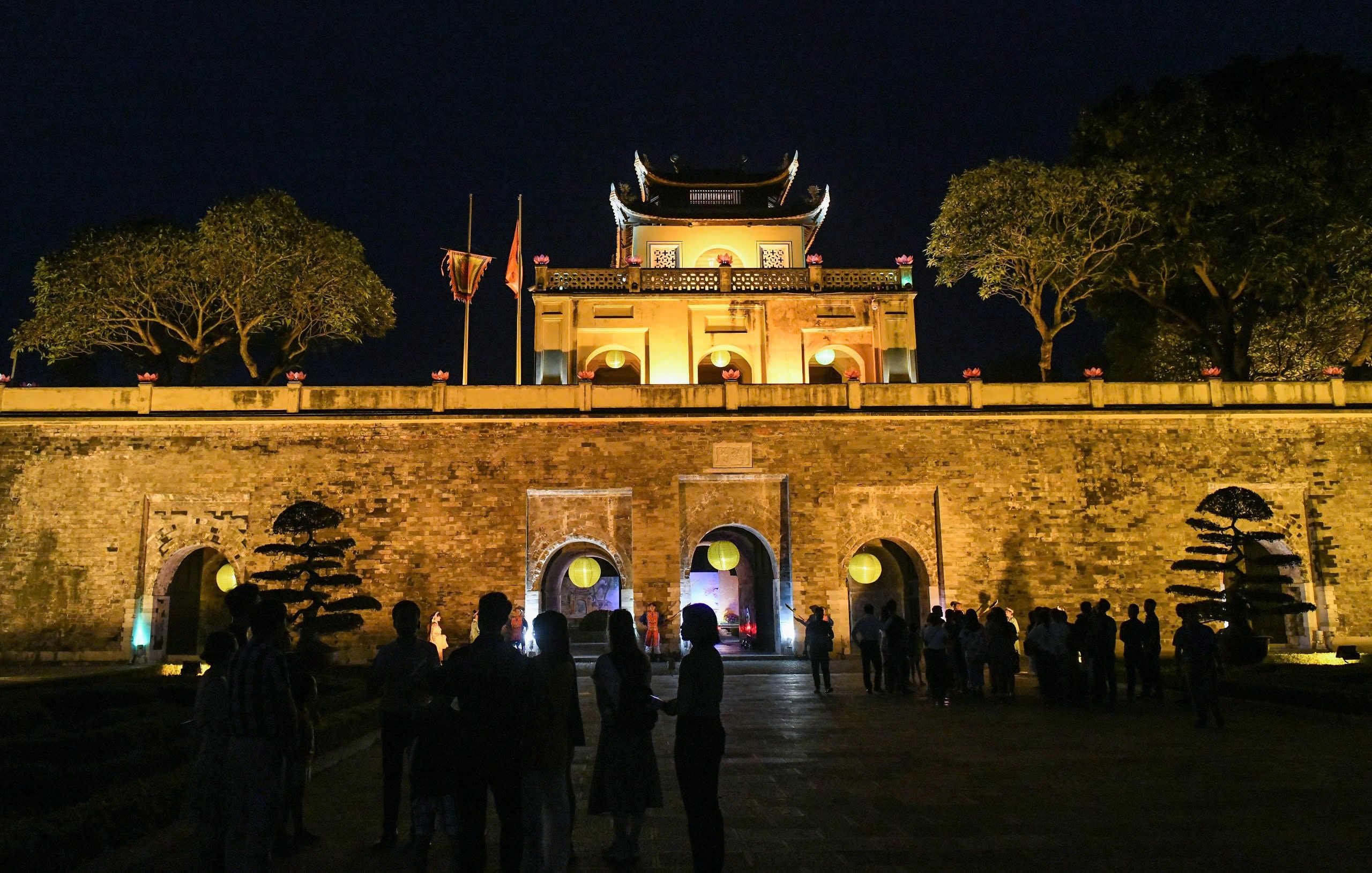
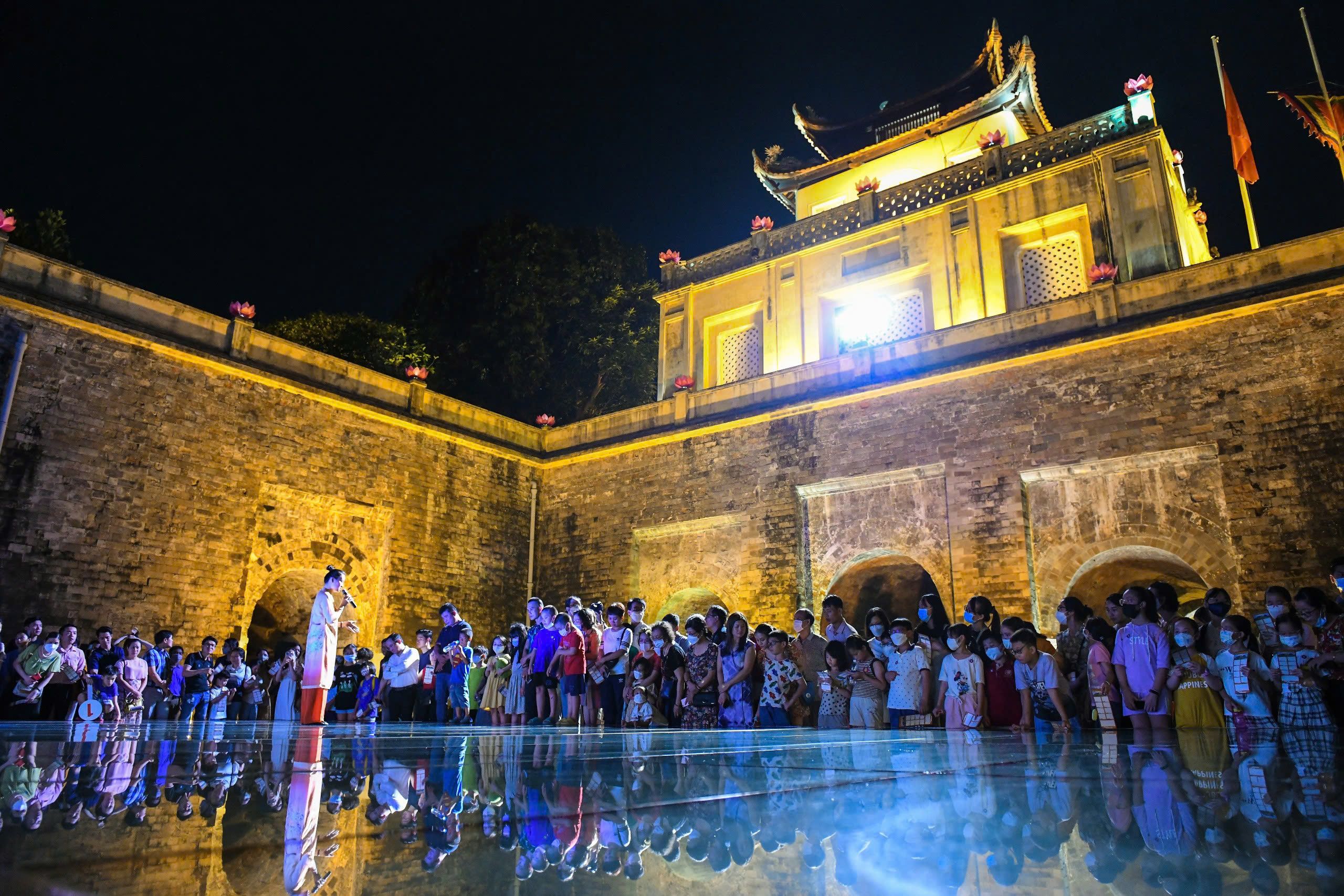
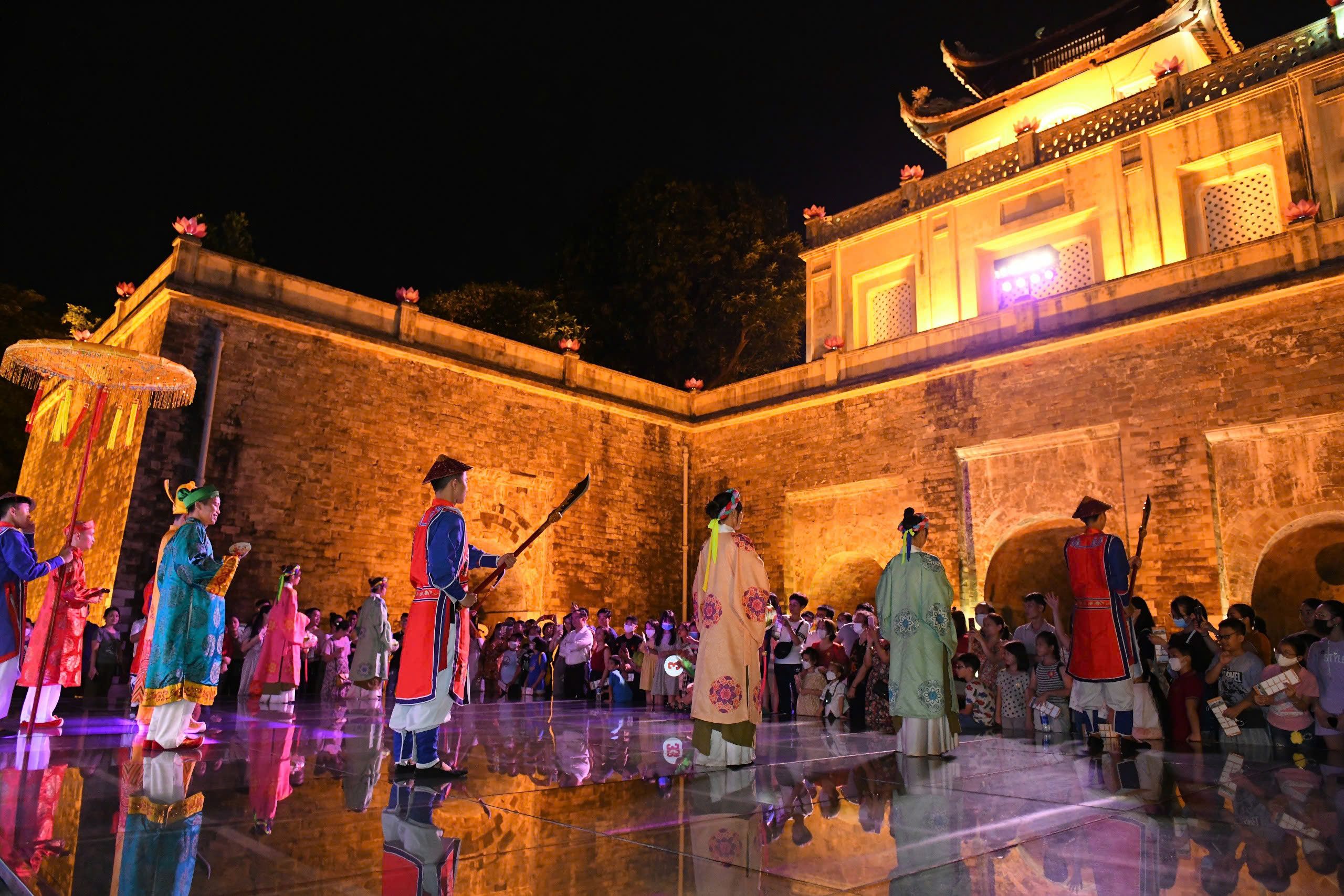
Exploring the Thang Long Imperial Citadel gave me an incredible feeling. I hope the city introduces more exciting activities, further promoting the value of this unique heritage.
Sharing his experience, Trinh Hoang Dung from Quan Nhan Street, Thanh Xuan District, Hanoi, said: “Exploring the Thang Long Imperial Citadel gave me an incredible feeling. I hope the city introduces more exciting activities, further promoting the value of this unique heritage”.
Alongside research into tangible values, the management unit has been working to revive old royal activities and ceremonies. With the efforts of scientists, many ancient court rituals have been restored, such as the Tao Quan Ceremony (Kitchen God Ceremony), Thuong Neu (neu pole erection), Tien Lich (calendar-presenting ceremony), Mid-Autumn Festival, and Doan Ngo (pest-killing) Festival. Each year, these ceremonies have attracted a large number of both domestic and international tourists.
Students are learning about the values of the Thang Long Imperial Citadel.
Students are learning about the values of the Thang Long Imperial Citadel.
Additionally, the Thang Long - Hanoi Heritage Conservation Centre has organised heritage education classes to help younger generations connect with the heritages through programmes such as "I Explore Heritage" and "I Become an Archaeologist." Every year, tens of thousands of students participate in these experiential activities, fostering a love for heritage among them, in addition to the hundreds of thousands of visitors from home and abroad.
With UNESCO's approval to research and restore the Kinh Thien Palace, the study, preservation, and promotion of the Thang Long Imperial Citadel's value has entered a new chapter. The unique values representing the nation’s cultural identity continue to be spread even further.
Production manager: KIEU HUONG - NAM DONG
Content: GIANG NAM
Photos: Giang Nam, Thanh Dat, Thang Long - Hanoi Heritage Conservation Centre
Design: Bao Minh

